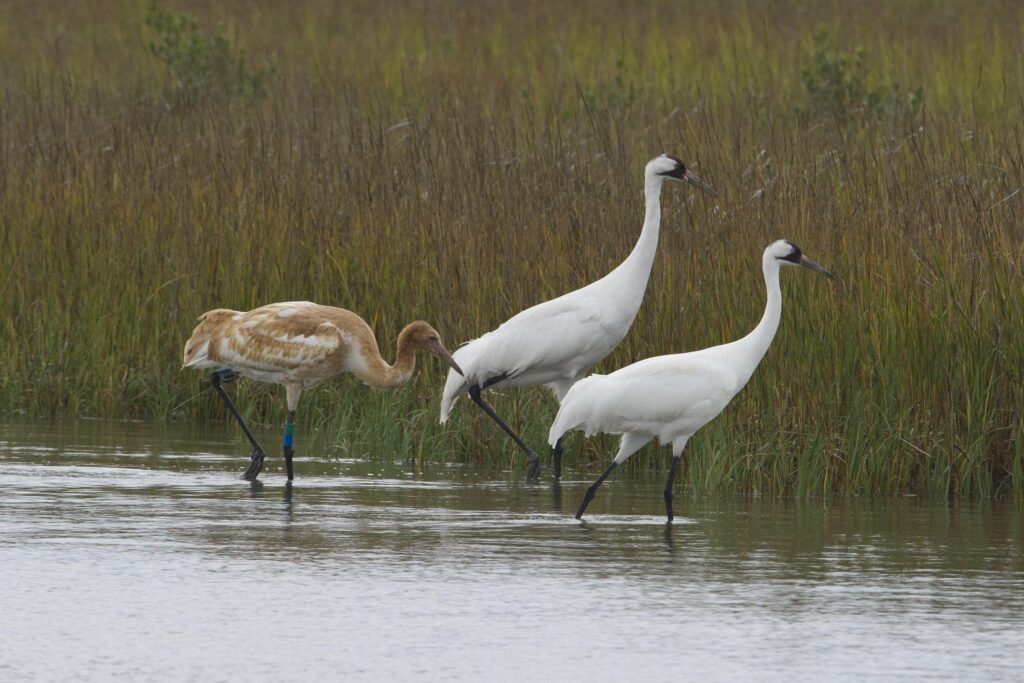by Sharon Hanzik, PWLCTMN
Have you ever been on a Whooping Crane expedition? If you haven’t, I highly recommend it. I’ve seen them on more than one occasion at Aransas National Wildlife Refuge (ANWR)and near Goose Island State Park. Each time I am in awe observing North America’s tallest bird species. They are quite majestic.
I’ve been lucky enough to have them fly directly overhead of the observation tower at ANWR. When I lived in Fort Bend County, we even had a stray that migrated with a flock of Sandhill Cranes. In early December this year I recently did a cautious double-take along Interstate 10 in Louisiana between Jennings and Crowley.
There were at least 3 very tall white crane-like birds in a plowed field. At 70ish mph I thought they were most likely Wood Storks. I slowed down a little as there were a few more and I made an exciting, positive ID. I did not know about the non-migratory flock of 10 introduced in 2011 as juveniles to the White Lake Wetlands Conservation Area only a short distance to the south (permitted entry only). This flock now totals 85.
Historically, more than 10,000 whooping cranes once populated North America. However, due to habitat destruction and hunting, their population declined to an all-time low of 15 individuals in 1941, placing them on the endangered species list in 1967. Today, the population has increased to over 800 individuals, with the majority of them living in the wild. The largest flock, which winters in Texas, is also the only natural migratory flock. They have remained at a stable 543 count for the last several years.
The whooping crane stands approximately 5 feet tall with a wingspan of 7.5 feet and weighs approximately 15 pounds. They live in wetlands, marshes, mudflats, and wet prairie fields. They eat plant tubers, small mammals, blue crabs, amphibians, reptiles, and insects. They mate for life and are known for their unique courtship dances and displays. They perform these dances to attract a mate and strengthen their bond. The dance involves bowing, jumping, and flapping their wings while making loud calls. They also have a unique vocalization, which is a loud, trumpeting call that can be heard from miles away – hence their name.
Whooping cranes are ground nesters. They typically lay two eggs, but only one chick usually survives. The chick stays with its parents for about nine months before becoming independent. Whooping cranes are also known for their ability to swim as hatchlings. These tawny-colored juveniles are often seen wintering with their parents.
Whooping cranes are not only an important part of North America’s ecosystem, they also serve as a symbol of hope for conservation efforts. Stop putting it off. Plan a trip now to see them before they start their 1000+ mile journey back to their breeding grounds in late March to early April. And, while you’re on the coast, enjoy one of their favorites, and mine, blue crab!
Resources: U.S. Fish and Wildlife, National Wildlife Federation, All About Birds



